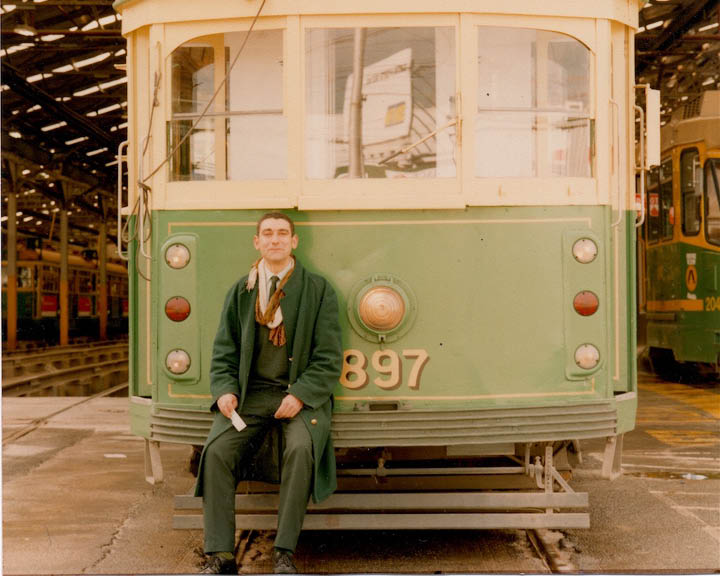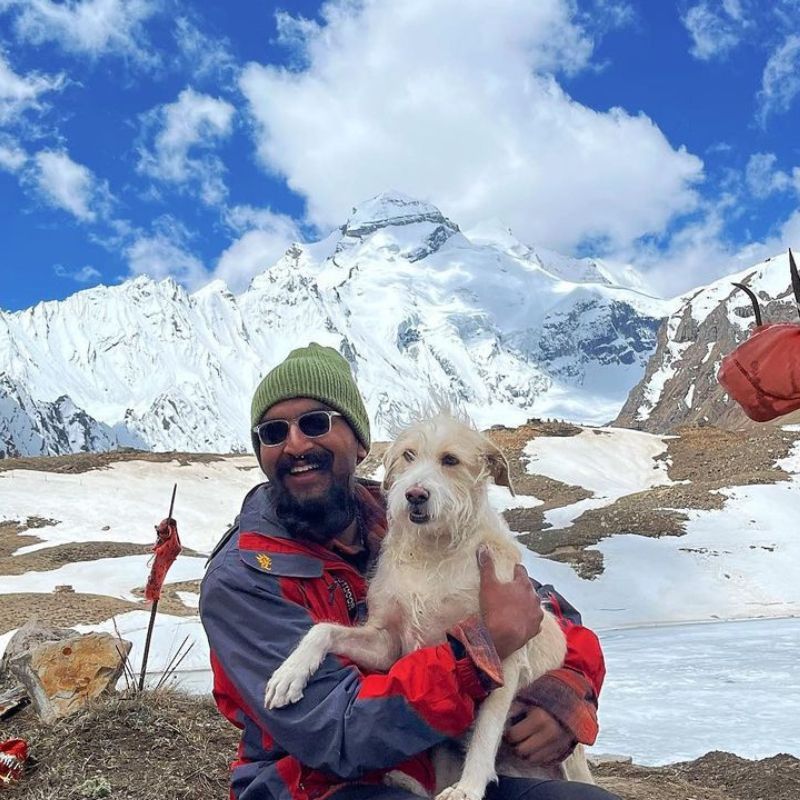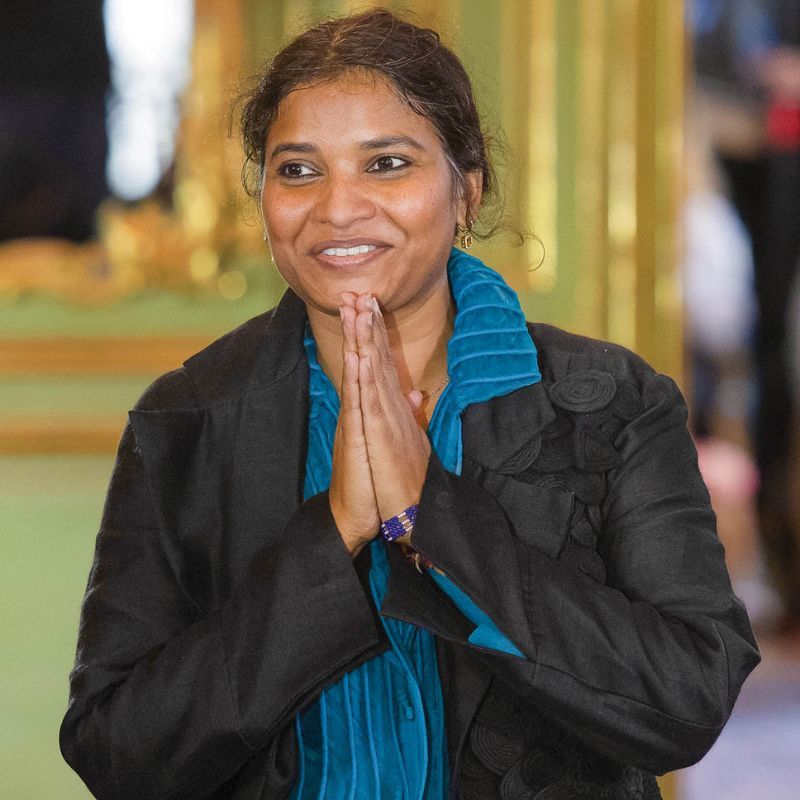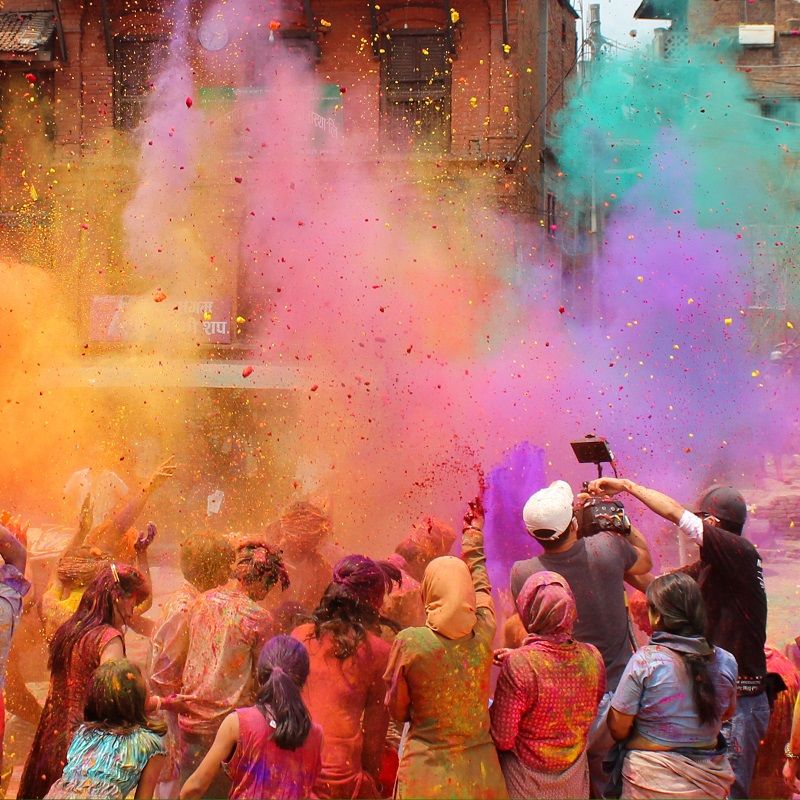
The slow-paced trams have a charm of their own but are today faced with the terrible wrath of modernisation and eventual decay. Melbourne’s tram conductor Roberto D’Andrea, however, is looking to reverse this trend through his project, Tramjatra. Doubling as a unique thread between Kolkata and Melbourne—two of the last surviving tram cities, his initiative is working towards keeping these eco-friendly transports chugging for years to come. He talks to us about this heartwarming project, and how the tram tradition continues to live. By Bayar Jain
Travel + Leisure India & South Asia: How did you land up from Melbourne to Kolkata?

Roberto D’Andrea: I’m a former Melbourne Tram conductor and driver. In 1994, I was on a five-week Indian holiday with fellow trammie and girlfriend, Sarah Pears. I landed in Calcutta (now Kolkata) and had a few days by myself, while Sarah was in Darjeeling.
Travel + Leisure India & South Asia: Tell us a little bit about the Tramjatra Project.

Roberto D’Andrea: Both Melbourne and Kolkata started tramway operations in the 1800s, at a time when cities worldwide were laying tracks and building tramcars. Our Tramjatra friendship is unique because both cities have retained trams when systems worldwide were being destroyed in the 1950s and 60s and replaced by cars, freeways and buses.
The name Tramjatra is taken in part from the Bengali word jatra, which means journey. We involve tram-loving communities from both cities. We paint and decorate trams. Trammies, artists, gunzels, and tram-loving passengers have decorated trams in both cities. Our friendship trams have names like Bondhu, Calbourne, Durga, Tramjatra, Sundari, Cricket, Baccha, Paribeshbondhu, Gitanjali, and our most recent, Love Tram Save Tram in 2019. Everyone is invited on board to travel with us.

Apart from that, performing a tram conductor’s greeting and entertaining passengers has been a special part of all Tramjatras. We engage many performance troupes and surprise passengers by converting the decorated tramcar into a little theatre. So, for the price of a tram ticket, they could have the Suckar Pancham Repertory Theatre performing The Post Office by Rabindranath Tagore on the Gitanjali tram in 2013, or Whole 9 Yards performing Storming Kolkata by Tram inside our 20th-anniversary tram in 2016. We also mount photographic exhibitions, host technical exchanges, share lung shirts for trammies, and screen the Mahadeb Shi produced Tramjatra documentary in both the cities. We explore our eccentric tram traditions and our shared British colonial heritage. We love to highlight the environmental benefits of tramways and how they help lower air pollution and congestion.
Travel + Leisure India & South Asia: How did you get involved with the Tramjatra Project?
Roberto D’Andrea: Before departing from Melbourne, my tram enthusiast friends nicknamed ‘gunzels’ at South Melbourne Tram Depot and told me about Calcutta’s extensive tramway system, and how it was under the threat of closure. I knew that Calcutta and Melbourne were two rare surviving tramway systems of continuous use outside of Europe and that both cities were a part of a prestigious global tram family, along with other classy cities like Amsterdam, Vienna, Budapest, Prague, Toronto, San Fransisco and Hong Kong. My tram depot friends wanted me to find out what was going on and report back on return. Anticipating that I may meet some Indian trammies, I packed some tram tickets and photos of Melbourne’s trams. On my first day on Indian soil, I went looking for Calcutta’s trams.

While walking down the famous Chowringhee I could hear the trams ‘ding dinging’ at a distance. It was the very same ding or gong sound that Melbourne’s trams make, which amazed me. By following the sound of the gong, I made my way to the Esplanade Tram Terminus. I was excited to find the trams and watched the trams and trammies for a while before boarding a Belgatchia Depot tramcar. I was keen to tell the trammies that I was a tram worker, a ‘tram wallah’ from Australia, so I did a bit of tram theatre and pretended to drive a tram, ring the conductor’s bells and mimicked the sound of the air compressor. The Belgatchia trammies got it straight away and they seemed to be genuinely excited as well. I experiencing my first taste of Bengali spontaneity and they sat me down and took me to the Belgatchia Tram Depot in North Calcutta. Seeing Calcutta by tram for the first time was colourful and beautiful.

The friendship and camaraderie showed of the Belgatchia trammies was extra special. We spent the day playing like tram children. They took me around every part of the depot: from the trammies mess room to the depot shed and starters office. What a treat! On a sad note, they confirmed what my gunzel friends had told me in Melbourne. Already half of the Belgatchia Tram Sheds had been taken over by buses. By sunset, I bid farewell to my new Belgatchia friends assuring we would stay in touch. Little did I know that on this very day a tram friendship, a Tramjatra, between Australia and India would be born.
Travel + Leisure India & South Asia: How did Tramjatra start?

Roberto D’Andrea: On return to Australia, I stayed in touch with my Calcuttan trammie friends through letters. When I told the trammies at South Depot about what happened at the Belgatchia Depot, we decided to help our new tram friends. A couple of months later, South Melbourne Depot formed a ‘sister depot’ relationship with the Belgatchia Depot. We joined with artists Mick Douglas and Andy Miller for this. By April 1995, South Depot trammies and artists had packed a box of gifts for the trammies at Belgatchia Depot, including a painted banner. This was delivered by a holidaying friend of ours, Phillip. With this, the sister depot friendship was now formalised.

In the meantime, Douglas had been reading a series of Save the Calcutta Tramways letters sent to the Public Transport Users Association in Melbourne by a tram enthusiast and activist Dr Debasish Bhattacharyya. Bhattacharyya was writing to the world asking for support in a campaign to save Calcutta’s Trams. I contacted both of them to offer help. We wrote about our sister depot relationship and suggested if we could visit Calcutta for a pro-tram travelling show. We offered to decorate Calcutta’s tramcar with pro-tram messaging. With that, we started preparing the travelling tram show, collecting tram tickets, destination rolls, historic Calcutta tram photos, and—with the help of Melbourne’s Bengali community—started translating tram conductor Malcolm Just’s tram poetry into Bengali.
In late September 1996, I booked an airline ticket and landed in Calcutta with a ‘Hand of Tramways Friendship’ travelling tram show. This was the first Tramjatra Festival between Melbourne and Kolkata. Twenty-six years later, we have decorated 13 trams in Kolkata and six in Melbourne.
Travel + Leisure India & South Asia: A large part of Tramjatra’s work involves showcasing paintings and artworks in and around these trams. What kind of art is usually depicted, and how do you choose it?

Roberto D’Andrea: We choose a theme, work on designs and then involve many to decorate. One example is the 2012 Paribeshbandhu Tram. This design was a collaboration between Tramjatrans from Melbourne and Calcutta Tramways Company tram workers. We wanted to highlight the environmental benefits of tramways, so we decided to paint the animals of India and Australia on the outside of the tram. Performing conductors gave passengers collectable cards of the animals that were painted on the tram.
Travel + Leisure India & South Asia: Trams are often seen as decaying modes of transport, especially in the modern, fast-paced lives of today. How does Tramjatra solve this challenge?

Roberto D’Andrea: Trams have made a global revival. Across Europe, Canada, the United States, Australia, and Asia, cities have gone to great expense to build new tramways called Light Rail. Tramjatra talks of the global revival of tramways on our decorated trams through entertainment and education. Current day, state-of-the-art tram technical exchanges are a part of the Tramjatra. Melbourne shares with Kolkata information on how we prioritise our tramcars, how frequently they run, our multimodal ticketing system, how we lay our tracks, etc. In summary, we celebrate the global revival of tramways, and share modern-day technical information.
Travel + Leisure India & South Asia: In what ways are the trams of Kolkata similar to those of Melbourne? And how do they differ?

Roberto D’Andrea: When I first came from Melbourne to Kolkata, we had many trams with a similar mechanical function. We understood each other because both cities had a tram conductor onboard. Over the years, Melbourne has modernised its tramways in all areas, while in Kolkata—other than laying new tram track in the 2000s and building new tramcars at the Nonapukur Workshops in 2007-08—they have stayed pretty much the same. Melbourne is the largest ‘per kilometre length’ tramway system in the world while in Kolkata, they have closed some tram lines.
Travel + Leisure India & South Asia: With social distancing and the fear of using public transport in place, how do you think the fate of trams will pan out?
Roberto D’Andrea: Once the coronavirus pandemic eases, people will return to trams, trains, buses, and other forms of collective transport. It will take time. Trams in Kolkata have become an important mode of transport, and we are confident that patronage will increase as COVID-19 restrictions slowly ease.
Travel + Leisure India & South Asia: What are some of your fondest tram memories?

Roberto D’Andrea: In 2001, we launched the Sundari Sunrise tram with the beautiful Usha Uthup singing onboard as it tracked through south Kolkata through the parklands of Maidan, and onto Tollygunge via Alipore, Hazra, Kalighat and Ballygunge. The Esplanade Tram goompty was a full house with Uthup making a passionate ‘pro-tram’ speech. It was a privilege to perform alongside her. When people heard her voice, people stopped on the tracks to hear her and dance around the tram.
Travel + Leisure India & South Asia: How do you keep passengers entertained while they’re travelling in a tram? When on duty, has language ever been a barrier for you? If yes, how do you cope with it?

Roberto D’Andrea: In Melbourne, there has been a long time history of performing Tram Conductors and I have enjoyed bringing this tradition to Kolkata. I was part of a unique tribe of trammies in Melbourne. We would sing, write and recite poetry, do magic tricks, and even tell stories. We were affectionately called ‘Connies’.
I have picked up some street Bengali and love playing with language! On the Paribeshbandhu tram, I learnt the Bengali names for Australian and Indian animals. If I was talking about a butterfly, pro-ja-puti in Bengali, I would slowly flap my hands like the wings of a butterfly and pretend to land on a flower! This is made easier by the themed photographs we mount inside each tram. There’s been plenty of mime theatre where I’m describing the tram theme by using hands, body gestures, and sound. The cards and tickets stored in my Melbourne Tram Conductors bag, which are given to passengers, act as a visual. If I don’t know the Bengali word, I simply gesture.
Travel + Leisure India & South Asia: What are some hidden gems of Kolkata that a tourist must visit?
Roberto D’Andrea: Kolkata’s trams move at a leisurely pace and are perfect for exploring this beautiful and historic city. Catch a number 36 Kidderpore tram to the Victoria Memorial and historic Race Course. Venture into the historic north on a number five Shambazzar tram, or from Rajabazzar to Howrah Bridge along the colourful Mahatma Gandhi Road.
Travel + Leisure India & South Asia: What is your take on conscious travel, and how do trams fit into this picture?

Roberto D’Andrea: Conscious travel is interesting. The advantage a visitor has when visiting Kolkata is that you can travel through a pollution-free mode of transport. Not only do you witness the daily movements of life, but you also travel in the only surviving tramways of India—a historic act in its own right!
Travel + Leisure India & South Asia: What is one of Tramjatra’s legacies in Kolkata?
Roberto D’Andrea: In the latter days of 2016, we formed the Calcutta Tram Users Association (CTUA). Modelled on Melbourne’s Public Transport Users Association, this ever-growing group of concerned citizens who have come together under the Tramjatra umbrella, have now formed into an active pro-tram lobby. The CTUA wants to see the tramways revived and modernised. We are active in the media and have an ever-growing social media presence of Facebook, Instagram, Whatsapp, and (now developing) Twitter too. We talk about how this revival will help lower Kolkata’s toxic air pollution and congestion; and argue for increased tram frequencies, safe platform tram stops, tram prioritisation, a published timetable and a tram map. We’re looking to reverse the downward trend!
Related: Kolkata Just Launched A One-Of-Its-Kind Tram Library That Will Travel Through College Street










